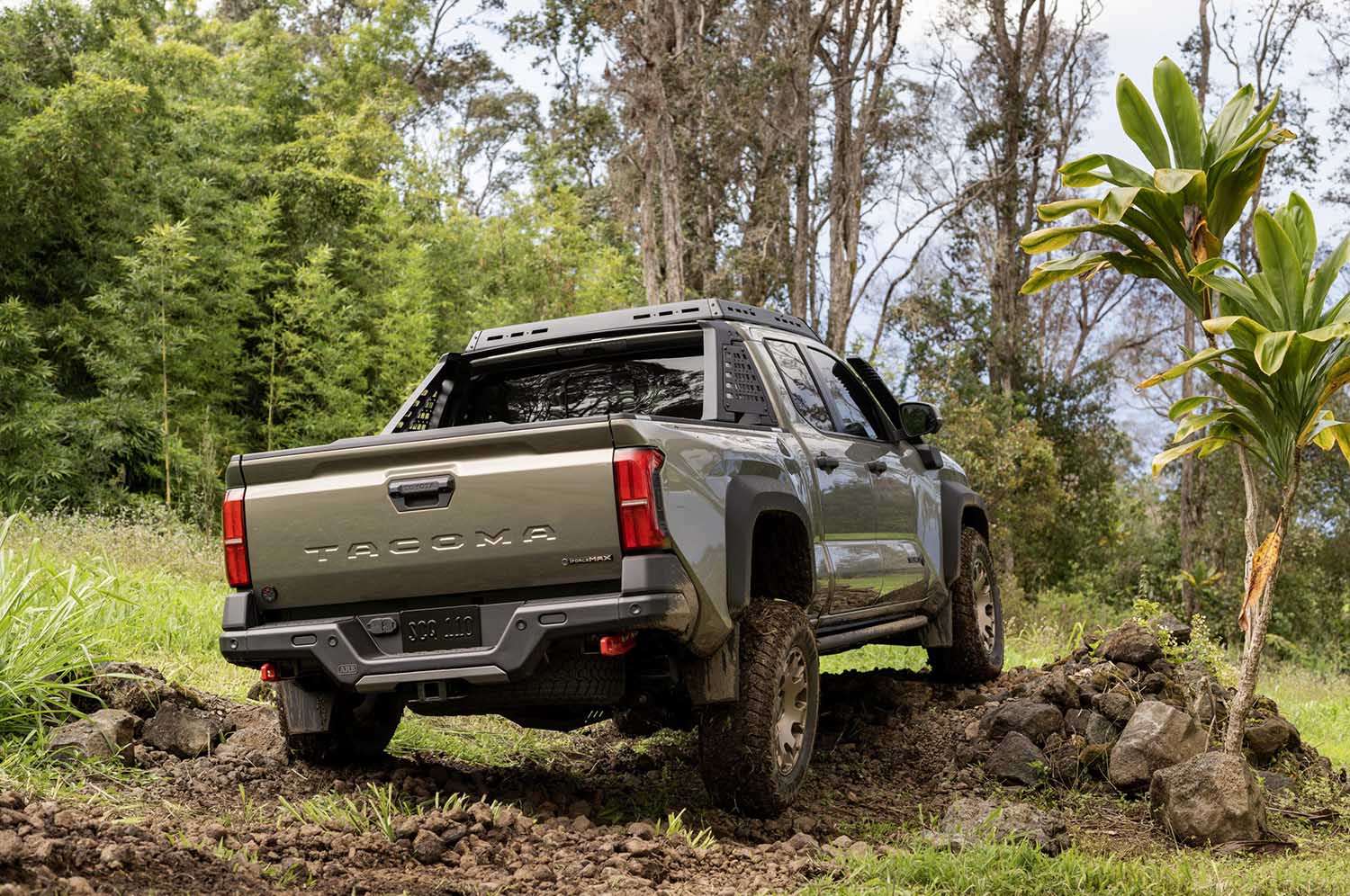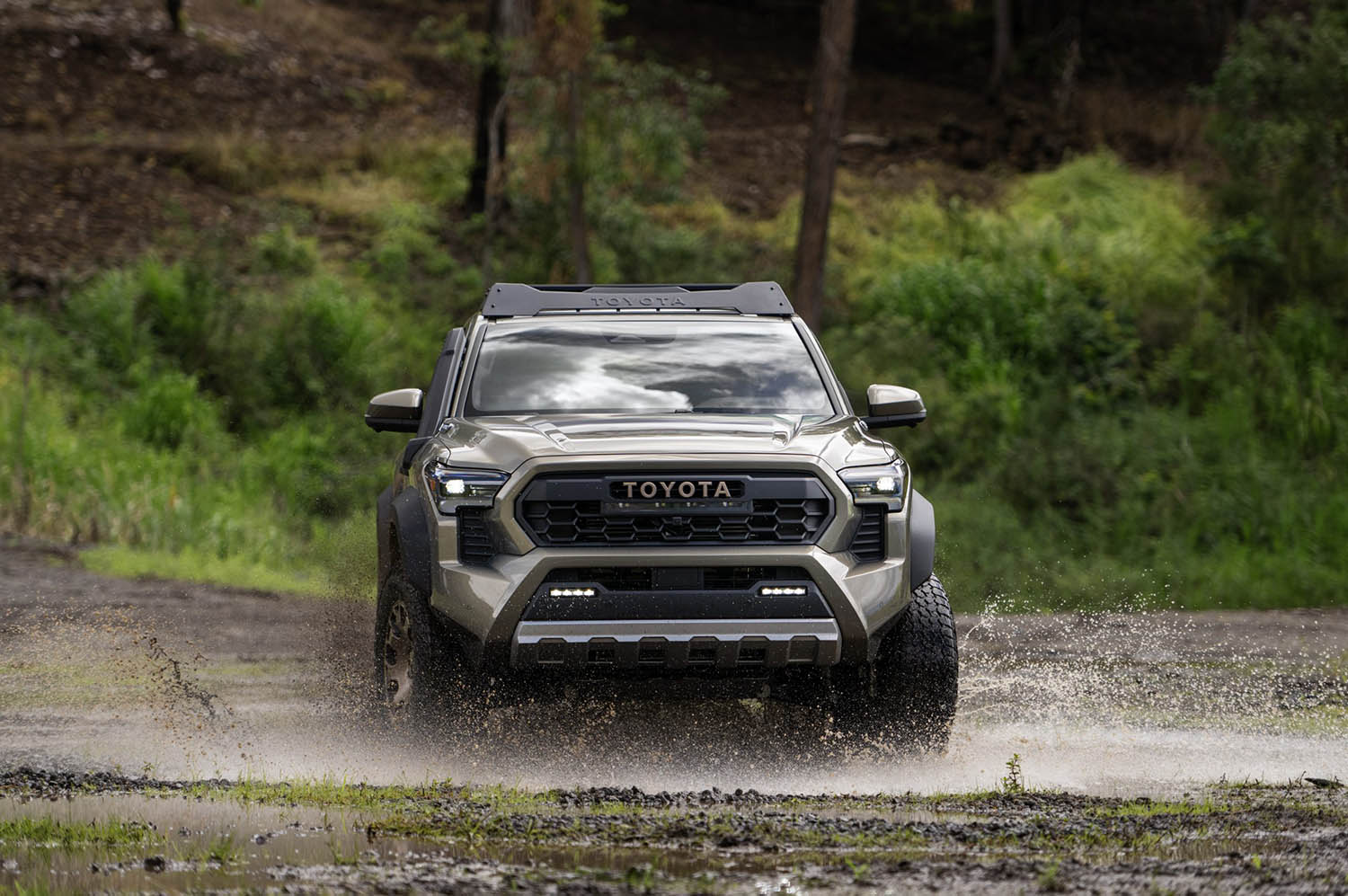How and When to Use Low Range in Your Off-Roader
Save this capability for when the going gets really rough.
 Toyota
Toyota
Article QuickTakes:
You may have seen off-road vehicles such as Ford Broncos and Toyota Tacomas crawling over boulders or churning through mud and wondered: How the heck is that possible?
Firstly, those vehicles can put the power to all four wheels for more traction. Secondly, they're often equipped with "low range," a driving mode that allows them to handle large obstacles while off-roading.
 Toyota
Toyota
What Is Low Range?
Low range, sometimes called low gear, is a mode for difficult terrain — such as large rocks or deep mud — that enables slow cruising with high power.
When you shift a vehicle from high range (the default) into low range, you're putting it into a gear setting that sends more torque to the wheels at a slower speed. Torque is twisting force, the kind you generate when you use a wrench to tighten a bolt or rotate a pencil inside a manual sharpener.
Low range can be useful when rock crawling, descending steep grades, trekking through the mud, or any time a slow, careful speed is required without a loss of power.
It can be tempting to attack an obstacle with momentum and speed. However, this approach can increase the chance of damage to your vehicle, including the transmission and body panels. Low range allows you to traverse obstacles with power rather than velocity and isn't meant for high speeds. Instead, low gearing is optimized for speeds around 10 to 15 mph.
Follow the old adage of "as slow as possible, as fast as necessary" when deciding on the right speed. It's a good idea to walk the obstacle first so you can see any potential hazards up close before you attempt the difficult section from behind the wheel.
 Ford
Ford
How to Engage Low Range
Shifting into four-wheel-drive low range is done through a transfer case, one of several automotive components (in addition to the transmission) that transfer power from the engine to the wheels.
Low range can be engaged electronically using a dial or button, as in the Ford F-150 Raptor, or manually with a gear lever, as in some Jeeps. Either way, before you operate that dial or lever, you'll generally need to bring the vehicle to a complete stop and put it into neutral. Because you're manually moving the gears in the transfer case when you use a gear lever, be aware that you might have to put some force into it.
Once low range is engaged, you should see an indicator on the dashboard display — often a light. Take the vehicle out of neutral and put it back into drive and you should be all set.
On the rare occasion that low range does not fully engage and the vehicle doesn't move when you press the accelerator, don't worry. Simply follow the procedure in reverse: Put the vehicle back into high gear, drive forward or backward a few feet, then try again. Remember to put the transmission into neutral before you attempt to change into low range.
Once you get over the challenging spot in the trail, you can keep your vehicle in low range, but it's not necessary. Your speed is limited when in low range, and you'll likely want to go faster on the smoother parts of the trail.



